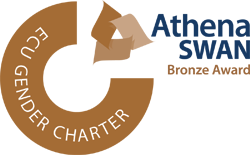Old Norse - Texts
Introduction
‘Old Norse’ is the term generally used in English to refer to the language and literature preserved in manuscripts written in Iceland and Norway during the Middle Ages. As most of the extant manuscripts we study were produced in Iceland, ‘Old Icelandic’ is arguably a more accurate term.
Iceland was settled from Norway during the Viking Age and after the adoption of Christianity at the turn of the millennium, the technology of alphabetic literacy and the scribal practices of the Church slowly began to replace oral traditions and the limited use of runic inscription as modes of communication. By the twelfth century texts in the vernacular modelled on Latin genres (such as saints’ lives and homilies) were being produced alongside vernacular texts whose focus was Icelandic culture itself: the Icelandic law-code, genealogies of Icelandic settlers, an early version of Landnámabók which documents the settlement of the island, Íslendingabók, a history of the Icelanders, and The First Grammatical Treatise, which sought to adapt the Latin alphabet to the pronunciation of Icelandic. Towards the end of the century an interest developed in writing extended prose narratives not just about native saints and Icelandic bishops, but also about contemporary Icelanders and Norwegian kings.
The genre of the ‘saga’ which developed out of this scribal culture flourished during the thirteenth and fourteenth centuries, preserving an extraordinary range of literary and historical works including the great Family Sagas (written in the thirteenth and fourteenth centuries but set in the Settlement Period), the cycles of Kings’ Sagas (such as Heimskringla), the Contemporary Sagas (which document, among other things, the political turmoil leading to Iceland’s loss of sovereignty to the Norwegian crown in 1262-4) and the Legendary Sagas, fantastic narratives set in the distant past. In many of these, poetry purported to be the compositions of the characters themselves is quoted to enliven and authenticate the narrative.
The corpus of skaldic poetry, artful and metrically intricate verses often composed in praise of foreign kings and princes, is recorded almost entirely as quotation within such prose works. Anthologies of whole poems are only preserved for eddic verse, poems set in the ancient heathen world and apparently derived from oral tradition. Our knowledge of pre-Christian Scandinavian mythology is substantially based on the eddic corpus, augmented and interpreted by Snorri Sturluson in the 1220s in his treatise known as the Prose Edda. The two texts on this site are an excerpt from the mythological treatise Gylfaginning, which is part of Snorri’s Edda and an excerpt from one of the Legendary Sagas, Hrólfs saga kraka.
The excerpt from Gylfaginning is read by Hildur Jónsdóttir using Modern Icelandic pronunciation. Compared with other European languages, Icelandic has changed very little since the Middle Ages. By adopting the conventions of Modern Icelandic in reading Old Norse we gain the fluency and natural intonation that reconstructed pronunciation cannot provide. While The First Grammatical Treatise preserves an account of Icelandic pronunciation from the twelfth century, many of the sagas preserve a later form of the language and many quoted poems a much earlier form, necessitating an artificial normalisation to stand for Old Norse pronunciation, and this has been avoided here. The second text is read by Halldís Ármannsdóttir at two speeds, the second slower version allows you to listen to phrases and to practise pronunciation.

